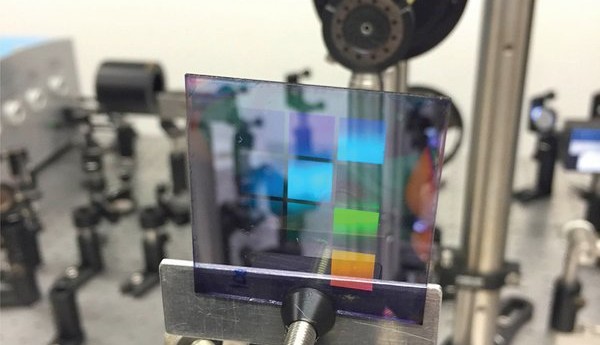Nanolaser shines in all directions
on

Researchers from the TU Eindhoven and DIFFER have developed an energy-efficient type of nanolaser that shines in all directions. What causes the laser to shine light in all directions, is caused by something that normally is highly undesirable in nanotechnology: defects in the material. The researchers envisage many potential applications. The research has been published in Physical Review Letters.
Perfect
The structures that are fabricated in nanoscience are so small that it is practically impossible to make them perfect. Such a defect in the exact shape and composition is, normally speaking, a curse for science and technology. However, a research collaboration in Eindhoven managed to turn that into an advantage. The team deliberately allowed a small amount of disorder in the material that they used to fabricate the nanolasers. This small degree of disorder resulted in a dramatic change: the laser no longer emits light in one direction, but in all directions.
Lasing threshold
A normal laser ‘clones’ every photon multiple times in a piece of material with mirrors on the ends. The photons move back and forth between the mirrors and on their way create other photons with the same characteristics. One of the mirrors allows a small amount of light to pass through, and it is there where the laser beam exits. To establish this behaviour, a voltage is applied to the material or it is illuminated with high energy light. The minimum amount of energy that is required to generate laser light, is called the lasing threshold.
Polariton laser
A polariton laser works in a different way. This laser does not clone photons, but groups different photons which then become all the same. This process looks a bit like the condensation of water, where the water molecules are initially moving with a random motion, but then form droplets together. Through the ‘condensation’ of photons, an intense, directed light is generated: laser light. An important advantage of this type of laser is that the lasing threshold is much lower. Until recently, polariton lasers only operated at extremely low temperatures. Through the use of organic materials they now work even at room temperature.
Plastic
The researchers from the TU Eindhoven and DIFFER have now discovered a new type of polariton laser. This consists of a regular pattern of silver nano stripes on a piece of coloured, transparent plastic. The researchers had already succeeded in making a nano laser using this principle, but now the silver stripes were deliberately not made absolutely perfect, which resulted in laser light in all directions. The properties of this light are mainly determined by the molecules that give the plastic its colour.
Possibilities
Compared to LEDs, the light is much brighter and better defined. That is why this light could be suitable as a light source for microscopes, where LEDs are frequently used. LIDAR is another potential application. The current LIDAR systems have one or more lasers and a set of fast-moving mirrors to cover a large area. A laser that shines in all directions does not need those mirrors and as a result the system should have a much reduced complexity.
Source: TU Eindhoven


Discussion (0 comments)